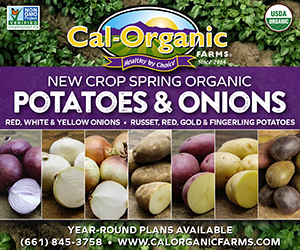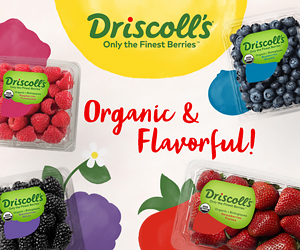As Tom Wood of Organisan Corporation explains it, Chitin is one of nature’s building blocks, featuring prominently in the structures of a wide variety of organisms. Chitin, and far more importantly its relative chitosan, offers tremendous benefits to agricultural professionals.
“If you look at the molecular structure of chitin, chitosan, and cellulose, they’re very closely related; it’s the same six-sided molecule that a lot of nature is built upon,” said Wood, western regional manager and product specialist for Organisan Corporation, based in Carrollton, GA.

Tom Wood, Product Specialist, Organisan Corporation
He explained that, generally speaking, anything in nature with an exoskeleton is made of chitin. That includes shells of sea creatures such as shrimp and lobsters. Chitin is also found in other groups such as fungi, mollusks, insects, and nematodes.
“If you look at the molecular structure of chitin, chitosan, and cellulose, they’re very closely related; it’s the same six-sided molecule that a lot of nature is built upon.” – Tom Wood
Chitin and chitosan break down naturally in the environment, but of course people don’t have any control over how much time it takes for that process to occur—that is left to the microorganism in the soil and other environmental conditions.

While a great deal of research has been done on chitin and chitosan, Wood said the work of an Organisan Corporation chemist led to a breakthrough relating to agriculture.
“He was working with chitosan in a completely unrelated field and learned how to gain some control over the molecular weights of the chitosan,” Wood said, adding that raw chitin from shrimp shells goes through a chemical process that removes a component called an acetyl group, which converts chitin to chitosan.

“The acetyl group is discarded, and what we’re left with is basically chitosan,” Wood said. “We go a little bit further than other companies do and extract for molecular weights and formulate the products specifically for agriculture.”
For the most part, the company’s agricultural products feature several adjuvants (including ones for organic crop production) specifically formulated for use with its fungicide and nematicide.
“We go a little bit further than other companies do and extract for molecular weights and formulate the products specifically for agriculture.” – Tom Wood
“When the good Lord and Mother Nature put the whole system together, there was a distinction made between what we call pathogenic fungi versus beneficial fungi,” Wood said. “Through our products, we work with the good guys (beneficial fungi and soil microbes) against the bad guys.”

The mission of Organisan Corporation is to provide farmers with the most sophisticated chitosan adjuvants.
“Through our products, we work with the good guys (beneficial fungi and soil microbes) against the bad guys.” – Tom Wood
“The chitosan actually becomes a food source for the beneficial microbes, and it’s very detrimental to the pathogens in the rhizosphere,” he said. “As far as working within nature, we’re just basically injecting ourselves into a process that already takes place anyway, and all we’re doing is ramping up that process. We’re just amplifying what would have happened anyway.”
The company’s fastest-growing market is in the regenerative and organic segments. It can be difficult for farmers transitioning into those segments because the change can be a shock, both to the producer and the soil environment.

“You can’t just say, ‘I’m now regenerative or organic, so I’m never going to spray fungicide again; I’m never doing this; I’m never doing that,’” Wood said. “You have to get the natural system in place, and you have to get working in sync with nature. We fill a niche there; we kind of view ourselves as a bridge product, where if you’re in that hard synthetic realm, and you’re trying to move into a regenerative or organic realm, we can help you bridge that; we can help you keep those pathogens at bay and work toward increasing your soil health, and most importantly, your profitability.”
As a farmer himself who grows in Idaho and a former custom applicator, Wood and a brother owned 500-horsepower tractors used for fumigation for potato outfits.
“We fill a niche there; we kind of view ourselves as a bridge product, where if you’re in that hard synthetic realm, and you’re trying to move into a regenerative or organic realm, we can help you bridge that; we can help you keep those pathogens at bay and work toward increasing your soil health, and most importantly, your profitability.” – Tom Wood

“I come from a background of using and applying very hard chemistry, but as we started moving away from that and toward more regenerative practices on my own farm, there seems to be about a three-year transition,” Wood said. “I make the comment sometimes that nature is going to test your commitment to doing it a different way before you’re going to get the full reward out of your efforts. I’ve heard other people say you have to pay for some past sins you committed against your soil before you move forward. But once you start getting the system working, get your micronutrients where they need to be, get your soil balanced, the microflora back in place, stop using products that have a deleterious side effect, it pays off.”
And the team at Organisan Corporation is ready to work with growers who want to make the shift toward regenerative and organic farming and reap the benefits of it.






